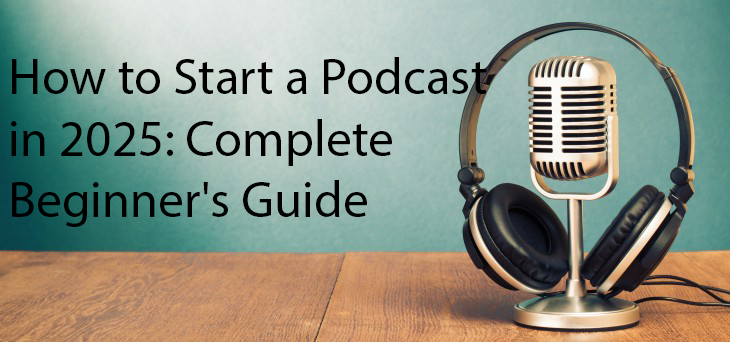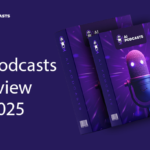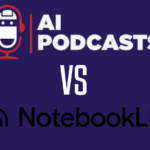
Introduction
Podcasting continues to surge in popularity, with over 2 million active podcasts and more than 48 million episodes available worldwide. This audio medium offers unprecedented reach and engagement—allowing creators to connect with audiences during commutes, workouts, and daily routines when visual content isn’t an option. Whether you’re looking to share your expertise, build your personal brand, or simply explore a passion project, podcasting provides an accessible platform with relatively low barriers to entry.
This comprehensive guide walks you through everything you need to know to launch your own successful podcast, from conceptualization to distribution and growth strategies. We’ll cover both traditional recording methods and new AI-powered alternatives that are revolutionizing content creation.
Step 1: Define Your Podcast’s Purpose and Audience
Finding Your Niche
The most successful podcasts typically occupy a clear niche. Rather than creating a general podcast about “business,” consider narrowing to “sustainable entrepreneurship for solopreneurs” or “financial strategies for creative professionals.” This specificity will help you:
- Stand out in crowded categories
- Attract a dedicated audience
- Establish authority more quickly
- Create more focused, valuable content
Understanding Your Target Audience
Ask yourself these questions to define your ideal listener:
- What demographic characteristics do they share?
- What problems are they trying to solve?
- How knowledgeable are they about your topic?
- What other podcasts might they already enjoy?
- When and how would they consume your content?
Creating listener personas can help you maintain focus when planning content and making format decisions.
Step 2: Choose Your Podcast Format
Common podcast formats include:
Interview Style
- Features conversations with guests who provide expertise or interesting perspectives
- Requires strong interviewing skills and regular guest recruitment
- Examples: The Tim Ferriss Show, How I Built This
Solo Commentary
- Showcases your individual thoughts, expertise, and perspectives
- Requires strong speaking abilities and confidence
- Examples: The Daily Stoic, Hardcore History
Conversational/Co-hosted
- Features regular discussions between two or more consistent hosts
- Requires good chemistry and balanced participation
- Examples: SmartLess, Pod Save America
Narrative/Storytelling
- Presents carefully crafted stories with scripting and production elements
- Requires strong writing and production skills
- Examples: Serial, This American Life
Educational/Tutorial
- Teaches specific skills or knowledge in a structured format
- Requires expertise and clear instructional abilities
- Examples: Grammar Girl, How to Money
Your chosen format should align with your strengths, resources, and topic area.
Step 3: Essential Equipment and Software
Traditional Recording Setup
For those looking to record their own voice, here’s what you’ll need:
Basic Equipment
- Microphone: Start with a USB microphone like the Audio-Technica ATR2100x-USB ($99) or Rode PodMic ($99)
- Headphones: Closed-back headphones like the Audio-Technica ATH-M20x ($49) work well
- Pop filter: Reduces plosive sounds (around $10-15)
- Mic stand or boom arm: Improves positioning and reduces handling noise ($15-40)
Recording Software
- Audacity: Free, open-source recording software for beginners
- GarageBand: Free for Mac users, intuitive interface
- Adobe Audition: Professional option with monthly subscription
- Riverside.fm: Records separate tracks for remote interviews with video
Editing Software
- Descript: Text-based editing that simplifies the process
- Hindenburg: Purpose-built for podcast production
- Reaper: Affordable DAW with powerful editing capabilities
AI-Powered Alternative
For those looking to bypass traditional recording and editing:
AI Podcast Creation
AI podcast creation tools like AIPodcasts offer an alternative path that eliminates the need for recording equipment, technical skills, or voice talent. These platforms can:
- Transform text into natural-sounding podcast episodes
- Generate voices that sound remarkably human-like
- Create both audio and video versions simultaneously
- Publish directly to major platforms
This approach is particularly useful for:
- Content creators repurposing written material
- Those uncomfortable with recording their own voice
- Entrepreneurs looking to launch quickly with minimal investment
- Non-native English speakers creating content in multiple languages
Step 4: Planning Your Content
Podcast Name and Cover Art
Your podcast name should be:
- Memorable and distinctive
- Clear about the podcast’s focus
- Easy to spell and pronounce
- Available as a domain name and social handles
Professional cover art is essential as it’s often the first impression potential listeners have. Ensure it:
- Looks good at small sizes (where most people will see it)
- Clearly displays your podcast name
- Uses colors and imagery that reflect your content
- Maintains consistency with your broader brand
Episode Planning
Develop a content calendar that outlines:
- Episode topics for at least 10-15 episodes
- Potential guests if applicable
- Publication schedule
- Seasonal themes or series
Consider batching your recording sessions to improve efficiency and consistency.
Step 5: Recording and Production
Recording Best Practices
If recording traditionally:
- Create a treated space (closets with clothes work well)
- Maintain consistent microphone distance (4-6 inches is standard)
- Record in a quiet environment during off-hours
- Capture room tone for easier editing
- Record separate tracks for each speaker when possible
Editing Workflow
A standard editing workflow includes:
- Removing mistakes, long pauses, and filler words
- Adding intro and outro music
- Balancing audio levels
- Applying compression and EQ as needed
- Exporting as MP3 files (typically 128kbps for spoken word)
Using AI Production
If using AI tools like AIPodcasts MegaPass, your workflow might look like:
- Writing or pasting your script
- Selecting voices, sound effects, and music
- Generating the episode
- Reviewing the output
- Making adjustments if necessary
Step 6: Hosting and Distribution
Podcast Hosting Platforms
You’ll need a dedicated podcast host to store your audio files and generate your RSS feed. Popular options include:
- Buzzsprout: User-friendly with good analytics ($12/month)
- Libsyn: Industry veteran with scalable plans ($5-20/month)
- Transistor: Allows multiple shows under one account ($19-49/month)
- Captivate: Unlimited podcasts and listeners ($19/month)
- Podbean: Affordable with good distribution ($9-29/month)
Distribution Channels
Once your podcast is hosted, distribute it to these essential platforms:
- Apple Podcasts (formerly iTunes)
- Spotify
- Google Podcasts
- Amazon Music/Audible
- Stitcher
- Pocket Casts
Most hosting platforms offer one-click distribution to major directories.
Episode Components
Each episode should include:
- Engaging intro (hook listeners in the first 30 seconds)
- Consistent introduction/welcome segment
- Main content
- Call-to-action or next steps
- Outro with credits and teaser for next episode
Step 7: Marketing Your Podcast
Launch Strategy
Consider these elements for a successful launch:
- Release 3-5 episodes at launch to hook new listeners
- Create a podcast trailer introducing your show
- Develop a press kit for potential promotion
- Reach out to your network for initial listeners and reviews
- Consider a launch event or online campaign
Ongoing Marketing
Sustain growth with these strategies:
- Repurpose content for social media (audiograms, quote graphics, clips)
- Develop a website or landing page for your show
- Build an email list to notify subscribers of new episodes
- Cross-promote with complementary podcasts
- Consider paid advertising on podcast apps
Utilizing AI Tools
AI podcast creation platforms like AIPodcasts Premium often include:
- Built-in SEO optimization for better discoverability
- Automatic distribution to major platforms
- Tools for creating promotional clips
- Analytics to track performance
Step 8: Measurement and Growth
Key Performance Indicators
Track these metrics to evaluate success:
- Downloads per episode (within first 30 days)
- Listener retention (how much of each episode is consumed)
- Subscription growth rate
- Social media engagement
- Website traffic from podcast listeners
Listener Engagement
Build community through:
- Encouraging and responding to reviews
- Creating listener surveys
- Answering questions on air
- Developing a community platform (Facebook group, Discord, etc.)
- Hosting live events or Q&A sessions
Step 9: Monetization Strategies
Once you’ve built an audience, consider these monetization methods:
Advertising and Sponsorships
- Direct sponsorships with relevant brands
- Podcast advertising networks (Midroll, Advertisecast)
- Affiliate marketing for products you genuinely use
Premium Content
- Membership platforms (Patreon, Supercast)
- Bonus episodes or extended interviews
- Ad-free versions of your show
- Early access to episodes
Products and Services
- Online courses related to your podcast topic
- Consulting or coaching services
- Books or digital products
- Merchandise (t-shirts, mugs, stickers)
Events
- Live podcast recordings
- Workshops or seminars
- Virtual summits with multiple speakers
- Annual conferences for your audience
Step 10: Scaling with AI Technology
As your podcast grows, you might consider scaling your production using AI tools. Platforms like AIPodcasts Unlimited-Lite can help you:
- Increase your production capacity without additional time investment
- Create content in multiple languages to reach new audiences
- Develop spin-off shows with minimal additional effort
- Repurpose your podcast content into other formats
- Offer podcast creation as a service to other creators or businesses
Conclusion
Starting a podcast in 2025 offers multiple pathways to success. Whether you choose the traditional recording approach or leverage new AI technologies like AIPodcasts Bundle, the most important factors are consistency, audience focus, and quality content.
By following this guide, you’ll be well-equipped to launch a podcast that connects with your target audience and achieves your content goals. The key is to start with clear intentions, select the approach that best fits your strengths and resources, and commit to continual improvement as you grow.
Remember that building a successful podcast takes time—focus on providing value to your listeners consistently, and the growth will follow.
Ready to start your podcasting journey without the technical hurdles? Explore AIPodcasts to discover how AI can transform your content into professional podcasts in minutes.


